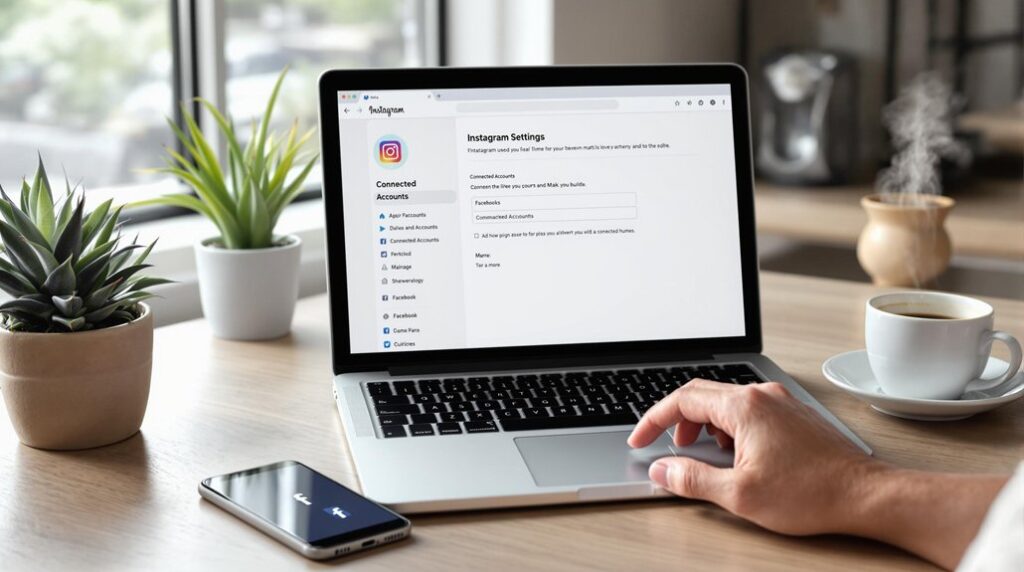To budget for Facebook ads, start with $20 per day for initial testing. Analyze performance metrics like click-through rates (CTR) and conversion rates to adjust your spend. Benchmark against industry standards and competitors for context. Define clear goals and KPIs, and align your budget with these objectives. Use audience insights to tailor your ads and optimize spending by measuring key metrics through Facebook Ads Manager. Gradually scale your budget based on data-driven insights and reallocate funds strategically for the best results. By refining this approach, you'll uncover additional strategies to maximize your ad spend effectiveness.
Key Takeaways
- Start with an affordable daily budget of $20 and scale up gradually based on performance data.
- Allocate your budget strategically, adjusting based on insights and ad performance.
- Benchmark your spending against industry standards and competitors to gauge effectiveness.
- Track key performance metrics like CPC, CTR, and ROAS to optimize spending.
- Use Facebook Ads Manager for daily monitoring and efficient budget modifications.
Determine Your Ad Budget
To determine your ad budget, start by allocating $20 per day to test the effectiveness of your Facebook campaigns. This initial budget allows you to gather essential data without overspending.
Utilize A/B testing to compare different ad creatives, targeting options, and bidding strategies. By running around 15 ad sets over a week, you can spend approximately $1000, providing a significant dataset for analysis.
Focus on key metrics such as cost per acquisition (CPA) and ad frequency. CPA gives you insight into how much you're spending to acquire a customer, while ad frequency helps you understand how often your audience sees your ads. High frequency might indicate ad fatigue, requiring adjustments to avoid diminishing returns.
Budget allocation should be dynamic. Use the insights gained from your trial period to adjust your spending. Monitor your return on investment (ROI) closely and be ready to reallocate funds to higher-performing ad sets.
Benchmark against industry standards and competitor spending to make sure you're not under or overspending. This data-driven approach ensures that your budget is optimized for maximum campaign effectiveness, leading to better performance and higher ROI.
Set Campaign Goals
To set effective campaign goals, start by defining success metrics like click-through rates or conversion rates.
Identify your target audience to guarantee your ads reach the right people.
Outline clear objectives such as increasing leads or boosting sales, which will guide your budget allocation and resource efficiency.
Define Success Metrics
Defining success metrics like lead generation, website traffic, or sales conversions is vital for setting clear campaign goals and determining the right budget for your Facebook ad campaign. You need to establish concrete objectives and Key Performance Indicators (KPIs) to guide your budget allocation and guarantee your resources are optimized for maximum impact.
Success measurement and performance tracking are essential for understanding how well your ads are performing and where adjustments are needed.
To effectively define your success metrics, consider these steps:
- Identify Key Performance Indicators (KPIs): Focus on metrics like Click-Through Rate (CTR), Return on Ad Spend (ROAS), and Cost Per Acquisition (CPA) to gauge campaign success.
- Set Specific Goals: Whether it's increasing website traffic by 20% or generating 50 new leads per week, having precise targets helps in campaign evaluation and budget optimization.
- Track Performance: Use Facebook Ads Manager and other analytics tools to monitor these KPIs regularly, making it easier to adjust your strategy as needed.
- Analyze and Adjust: Regularly review your performance data to identify trends and make necessary adjustments to your budget and strategy for continuous improvement.
Identify Target Audience
Once you've established your success metrics, the next step is to identify your target audience based on demographics, interests, and behaviors to set clear campaign goals. Understanding demographics such as age, gender, location, and income levels is essential for targeting the right people. By knowing these basic attributes, you can tailor your messaging to resonate with specific groups.
Utilize Facebook's audience insights tool to gather valuable data on your audience's interests and behaviors. This tool can help you identify what your potential customers are passionate about, their purchasing habits, and even their online behaviors. With this information, you can craft messaging that directly addresses their pain points and needs, making your ads more compelling and effective.
Aligning your campaign goals with the characteristics and behaviors of your target audience ensures that your efforts are focused and impactful. For instance, if your audience is primarily interested in sustainable products, your campaign should highlight the eco-friendly aspects of your offerings. This strategic approach not only maximizes your budget but also increases your chances of achieving your desired outcomes.
Keep your audience's preferences at the forefront to craft ads that truly connect and convert.
Outline Key Objectives
Establishing clear campaign goals guarantees you can allocate your budget effectively and measure success through well-defined KPIs. Essential setting is vital for determining how much you should spend on Facebook ads. By defining your objectives, you can align your budget allocation with these goals, ensuring every dollar is used efficiently.
Here's how you can outline key objectives:
- Identify Primary Goals: Determine whether your primary aim is brand awareness, lead generation, website traffic, or conversions. Each goal will require a different budget strategy.
- Set KPIs: Establish specific KPIs to measure the success of your campaign. For example, if your goal is lead generation, track metrics like cost per lead and total leads generated.
- Analyze Target Audience: Consider the size and behavior of your target audience. A larger audience or a highly competitive market may require a higher budget to achieve significant reach and impact.
- Define Desired Outcomes: Clearly articulate what success looks like for your campaign. For instance, if your objective is to drive website traffic, determine a specific number of visitors you aim to attract within a set timeframe.
Analyze Target Audience
To optimize your Facebook ad budget, it's essential to thoroughly analyze your target audience's demographics, interests, and behaviors. Understanding these elements enables you to refine targeting, optimize messaging, and ultimately enhance engagement and increase conversions.
Start by leveraging Facebook's audience insights tool to gather valuable data. This tool helps you understand your audience's age, gender, location, and other key demographics, giving you a clear picture of who you're reaching.
Next, explore their interests and behaviors. What pages do they like? What activities do they engage in? By segmenting your audience based on these characteristics, you can tailor ad campaigns that speak directly to their preferences and needs. This segmentation guarantees that your budget is spent efficiently, reaching the right people with the right message.
Crafting personalized ad messaging based on your audience analysis is critical. When your ads resonate with your audience's interests and behaviors, you're more likely to see higher engagement rates and better conversion outcomes.
Choose Ad Placement
Leveraging Facebook's diverse ad placement options, you can strategically allocate your budget to maximize reach and engagement. By understanding where your ads will appear—whether in Feeds, Stories, Messenger, or the Audience Network—you can optimize your budget allocation for the best results.
- Automatic Ad Placement: Using Facebook's automatic ad placement can save you time and resources by letting the platform choose the most effective placements for your ads. This option is ideal if you're looking to optimize your budget efficiently without manual intervention.
- Manual Ad Placement: If you prefer more control, opt for manual ad placement. This allows you to tailor your strategy, ensuring your ads appear in specific locations that align with your campaign goals.
- Cost and Performance Metrics: Keep in mind that different ad placements come with varying costs and performance metrics. Metrics like Cost-per-click, Cost-per-conversion, and Impressions will be essential for determining the effectiveness of each placement.
- Performance Tracking and A/B Testing: Regularly monitor your ad performance and conduct A/B testing to refine your placement strategy. This data-driven approach will help you make informed decisions and adjust your budget allocation to maximize ROI.
Measure Ad Performance
After selecting your ad placements, it's essential to measure ad performance using key metrics like Cost-per-click (CPC), Cost-per-conversion, and Impressions to evaluate effectiveness. Tracking these metrics allows you to conduct a detailed ad performance analysis.
Focus on engagement metrics such as Click-Through Rate (CTR), Conversion Rate, and Return on Ad Spend (ROAS) to gain insights into how well your ads resonate with your audience.
Utilize Facebook's Ad Manager to monitor your campaign performance daily. This platform provides in-depth reporting metrics that are essential for tracking ad effectiveness and conducting cost analysis. By regularly reviewing these reports, you can identify trends, pinpoint underperforming ads, and make data-driven decisions for budget optimization.
Additionally, evaluate your ad placements across Feeds, Stories, Messenger, and Audience Network frequently. This ensures you're maximizing both performance and budget efficiency. Analyzing these factors systematically helps in refining your ad strategy and achieving better outcomes.
Consistently measuring and interpreting these metrics not only helps in understanding the current performance but also in foreseeing potential adjustments needed to enhance your ad campaigns. This analytical approach ensures you're not just spending but investing your budget wisely for best returns.
Optimize Spending
Experimenting with different ad elements and adjusting based on performance data helps you optimize your Facebook ad spending effectively. Start with an affordable daily budget and scale up gradually to find the sweet spot for best conversion rates. Utilize Facebook Ads Manager to modify your budget and monitor performance metrics efficiently.
By evaluating industry benchmarks like CPM, CTR, and conversion rates, you can make informed budget allocation decisions.
To optimize spending, follow these steps:
- Set a Baseline Budget: Begin with a modest daily budget to gather initial data without overspending.
- Track Ad Performance: Use Facebook Ads Manager to consistently monitor key metrics like CPM and CTR.
- Adjust Based on Data: Analyze the performance data and tweak your ad elements to improve effectiveness.
- Reallocate Budget Strategically: Shift your budget towards high-performing ads while minimizing spend on underperforming ones.
Constantly tracking ad performance and making data-driven decisions will help you allocate your budgets for maximum impact. By following these strategies, you can make sure that your ad spend is optimized, leading to better results and higher ROI.
Frequently Asked Questions
How Much Should Your Facebook Ads Budget Be?
Your Facebook ads budget allocation should be data-driven, considering industry benchmarks and targeting demographics. Start with $20 daily, totaling $1000 for a week. Analyze performance and adjust based on ROI to optimize results.
What Is a Good Cost per Purchase for Facebook Ads?
A good cost per purchase for Facebook ads typically ranges from $5 to $50. Use industry benchmarks and historical data to optimize ad performance, aiming to lower your CPP over time for better ROI and profitability.
What Is the Best Amount to Spend on Facebook Ads per Day?
Start with $20 per day to gauge performance. Adjust based on target audience engagement and campaign goals. Strategic spending aligns with data; if ROI is positive, gradually increase your budget to optimize and scale effectively.
Is $20 a Day Good for Facebook Ads?
Yes, $20 a day is a good starting point for Facebook ads. It allows you to test audience targeting and campaign optimization effectively. Analyze the data and adjust accordingly to maximize your ad spend's efficiency.
Conclusion
To maximize your Facebook ad budget, set clear campaign goals and thoroughly analyze your target audience. Choose strategic ad placements and consistently measure performance using precise data.
Optimize spending by adjusting your strategies based on these insights. With a well-planned budget, targeted ads, and continuous optimization, you'll achieve your desired outcomes efficiently.
Remember, data-driven decisions are key to making the most of your advertising dollars.




